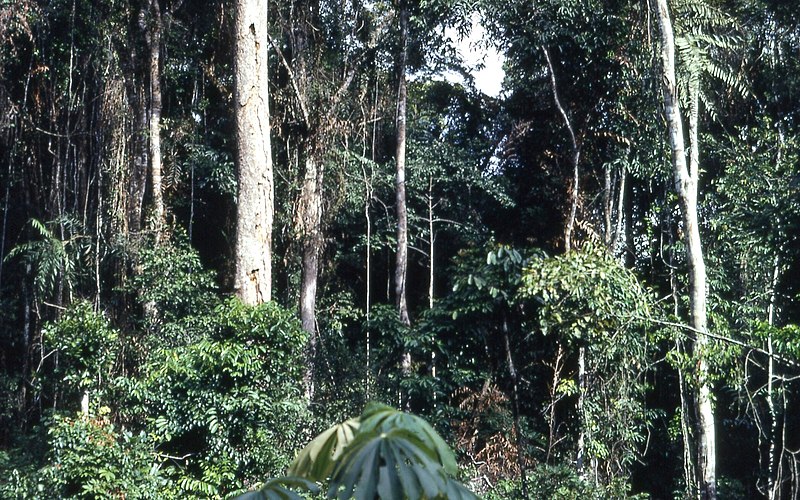Biomes are large natural terrestrial (land) ecosystems. It is the largest community of organisms interacting with the non-living environment. Biomes are identified by their vegetation. Examples include forest, desert, savannas, etc. The type of vegetation is largely determined by climatic factors especially rainfall and temperature, as such, regions in the world which have similar climates also have similar biomes.
Local Biomes in Nigeria
This can be grouped into two major zones
- The forest zone
- Savanna zone
- The forest zone: This is made up of vegetations having mainly trees, they include:
(a) Mangrove swamp:
A forest of tall woody trees with aerial roots. The rainfall is high and the soil is water logged throughout the year. Plants here include the white and red mangroves, raffia palms and coconut.
Mangrove swamps are found in states like the Delta, Cross River, Bayelsa etc. The climate is hot and wet throughout the year. Rainfall is heavy usually above 2500mm and the average monthly temperature is around 26ºc for most months of the year.

(b) Tropical Rainforest:
Consists of tall trees with buttress roots, with evergreen and broad leaves. The trees exist in canopies i.e. different layers, and prevent sunlight from reaching the forest floor, thus the vegetation on the forest floor is sparse. Epiphytes and climbers are common features in the trees.

The climate is hot and wet throughout the year. The mean annual temperature is 27ºc while the mean total annual rainfall is 2000mm. These forests are found in states like Oyo, Edo, Cross River, Ogun, Ondo, Imo and Rivers State.
c. Savanna zone:
This is made up mainly of grasses and includes;

(a) Southern Guinea Savanna: Consists mainly of tall grasses, with a few tall trees with broad leaves. The trees are scattered and deciduous. Examples include the locust beans trees, shear-butter and isobelina.
It has a moderate rainfall of between 100-150cm per annum. They are located in Enugu, Kogi, Benue, Kwara, Osun, Oyo, Ebonyi, and Ekiti States.
(b) Northern Guinea Savanna (Sudan Savanna): This has short but numerous grasses. The trees are scattered, short and deciduous. The trees have thorns while others have thick barks. The trees include acacia, date palm, baobab and silk cotton plants.
The rainfall is low, about 50-100cm per annum. They may be found in states like plateau, Kaduna, Bauchi, Niger, Taraba, Adamawa and Kano.
(c) Sahel Savanna: It has very short and scanty grasses. There are short and tough shrubs or trees. The plants are mainly drought resistant and scattered examples include acacia, gum arabic and date palm.
The temperature is very high and rainfall is very low, below 50cm per annum. It may be found in States like Bornu, Katsina, Sokoto, Yobe, Kebbi, Zamfara, Kano and Jigawa.
Read our disclaimer.
AD: Take Free online baptism course: Preachi.com 